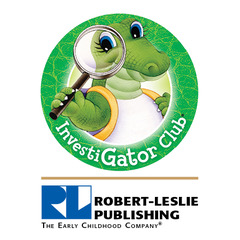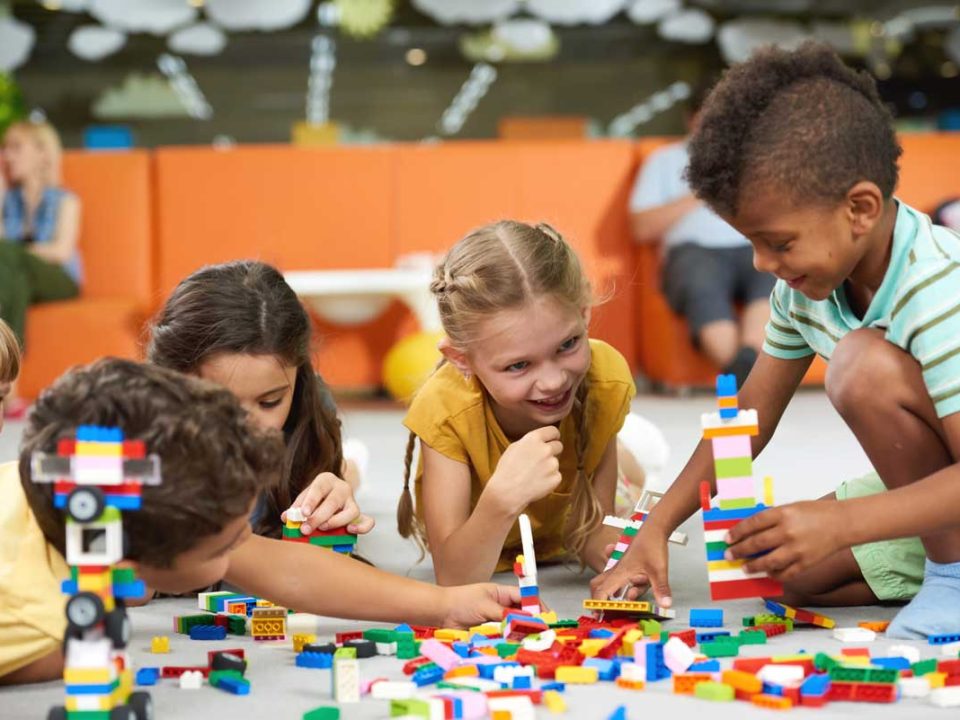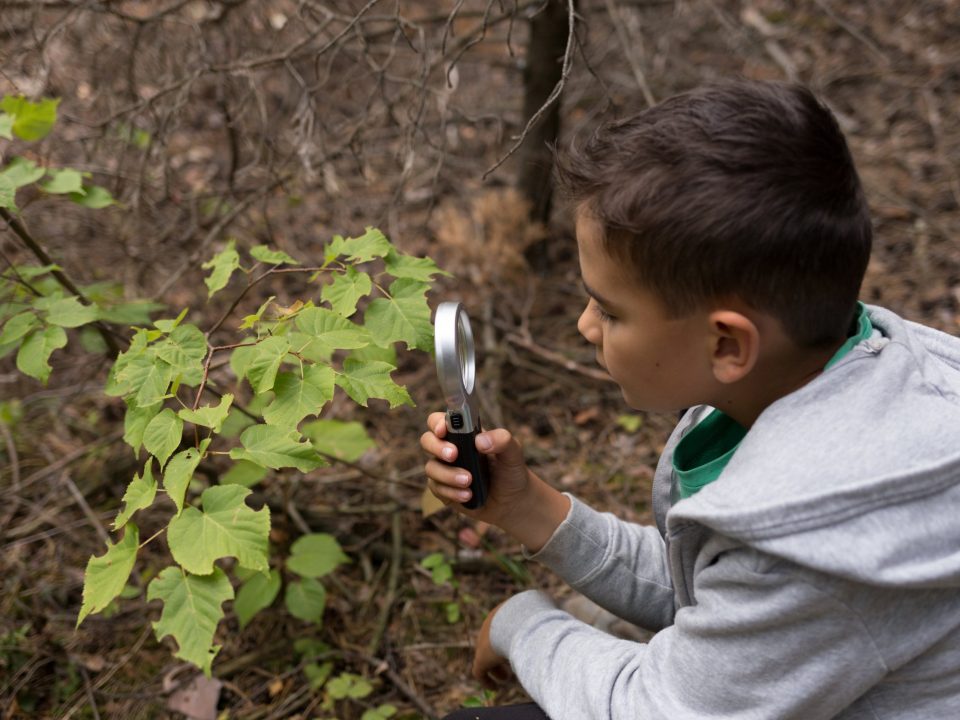
Happy child girl playing in tunnel on playground.
Obstacle Course Fun Combines Learning and Play: Direction and Position
By Terra Tarango
On a drive through central Texas recently, I admired the colorful splashes of wildflowers along the highways. I couldn’t help but think about how the showy blooms started as small seeds that lay dormant in the ground for months and then slowly started to germinate before finally sprouting through the surface, ready to join the world of the top-dwellers. If a seed could talk, what would it say of that journey? Of the patience and perseverance required of it?
Maybe it’s just me who personifies seeds on an otherwise perfectly normal drive, but I do think there’s a lesson here for our preschoolers. We all get impatient sometimes. And when waiting also requires some work or effort, perseverance is sometimes hard to come by. Let’s encourage our children to be like seeds — to grow at their own rate, to continue trying no matter the obstacles, to have confidence that patience and perseverance will pay off.
If you’d like to help your children develop these skills (and expel a little energy along the way), challenge them with an obstacle course! You can set the course up in your classroom or outdoors. Include objects that children can jump over, crawl under, walk around, crawl through, and go inside. You can number the objects to show order, and you can include pictures of a seed’s progress from seed to bloom to reinforce the theme of patience and perseverance as well as the science concept of how plants grow!
An obstacle course also provides the perfect opportunity to help children learn the concepts of direction and position – and to practice oral language, too! Try these obstacle-course activities from my friends at InvestiGator Club® and reinforce those important kindergarten readiness skills.
|
3-4 Year Olds Preschool |
Obstacle Course Discourse Introduce the obstacle course, describing each action children will do. Point to each obstacle and say: Crawl under the table; walk around the chair; jump over the rope; go through the tunnel; go outside the circle; crawl inside the hula hoop; walk on the balance beam. As children form a line to follow the obstacle course, reinforce order words by asking: Who is first in line? Who is last? Continue using the direction and order words as you guide them through the course. Encourage them to verbalize what they are doing as they come to each obstacle. Listen for correct use of position words.
|
|
4-5 Year Olds Prekindergarten |
Guess My Direction After children complete the obstacle course as a class, have them work in pairs to play a game. Provide packets of seeds or small beanbags to represent seeds. Have one child put the “seeds” in a unique place on the obstacle course and ask their partner a direction question such as: Are the seeds inside the box or outside the box? In front of the chair or behind the chair? Under the table or on top of the table? Challenge children to take turns arranging the seeds and using direction words. After the game, model how to recall where the seeds were placed first, second, and last: First, the seeds were inside the box. Second, they were behind the chair. Last, they were on top of the table. Guide pairs to recall the different positions of the seeds, in order. |
|
5-6 Year Olds Kindergarten/ Transitional Kindergarten |
Where Are the Seeds? Introduce the word obstacle by saying: An obstacle is something that is blocking your way. Have children repeat the word obstacle with you and use the obstacle course to demonstrate the word. Next, show children a packet or plastic bag of seeds or beans. Say: I am going to place the seeds somewhere in the obstacle course. Point to each obstacle on the course and say: It might be the first obstacle, the second obstacle, the third obstacle, or the fourth. Ask children to look away while you hide the seeds. Have children then ask questions using ordinal position words: Are the seeds under the first obstacle? Answer yes/no until the class discovers the location of the seeds. |
Consider extending any of these activities by letting children plant fast-growing seeds (such as peas or beans) inside small, soil-filled cups. As a class, water them and document any growth you see. Use direction and ordinal words when discussing and documenting the growth of the seedlings.
I hope you and your children enjoy your obstacle course and all the learning that can come from it — and the expelled energy during these rainy Spring days, too!
Let us know how it goes!
If you liked this sneak peek and want more activities like this, then Contact us or call 773-935-8358 for a complete component list and to request samples.

About The InvestiGator Club®:
The InvestiGator Club® family of early childhood resources delivers play-based learning programs for children from birth through transitional kindergarten. Standards-based curricula are approved and adopted in states throughout the U.S., including Texas, Florida, Arkansas, Georgia, Virginia, Maryland, Louisiana, Illinois, Minnesota, South Carolina, North Carolina, Rhode Island, Delaware, and more. The delightful InvestiGator Club® characters engage young children in developmentally appropriate experiences that bring joyful learning to classrooms, childcare providers, and families. For more information, email Robert-Leslie Publishing, The Early Childhood Company™, or call 773-935-8358.

About the Author:
Terra Tarango is an accomplished advocate in the education industry with more than 20 years’ experience in educational publishing and services. Terra serves as Director of Van Andel Institute where she oversees innovative student programs, game-changing professional development, and the implementation of Blue Apple projects where teachers inspire students to make the world a better place. She is an expert in instructional climate and culture and has devoted her career to increasing curiosity, creativity, and critical thinking in classrooms.




